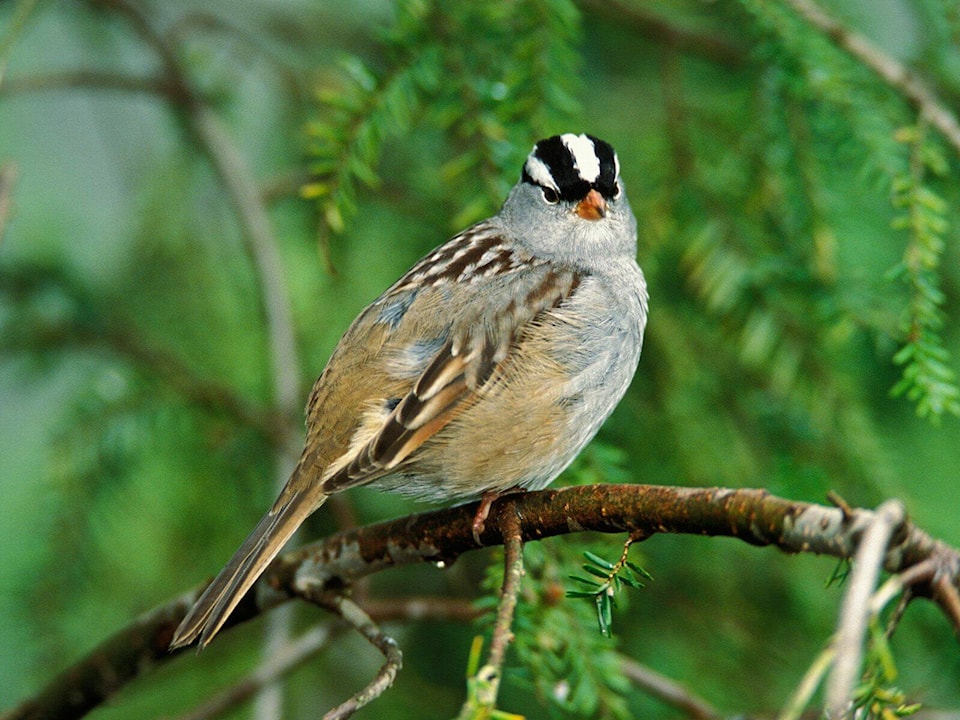Here are a few Nature Nut tidbits. Red-winged blackbirds are back and established on their wetland territories.
Back in the late 1980s we had some Yellow-headed blackbirds establish breeding territories at a marsh on Viewmount Road, Smithers known as “Then’s Marsh.” The yellow-headed blackbirds moved into the marsh after Ducks Unlimited completed some rehabilitation of the site by removing some of the overgrown cat tails and providing openings for water birds to land.
Males of both red-winged and yellow-headed blackbirds are known to compete for nest sites, but the yellow-headed blackbirds appear to have a bigger ego and bully the red-winged blackbirds out of prime nesting sites.
Despite this, the yellow-headed blackbirds at Then’s Marsh gradually disappeared leaving the red-winged blackbirds in peace. No one is sure why.
White-crowned sparrows showed up on Earth weekend here in the Bulkley Valley. If you listen carefully to the male’s song you can imagine he is singing “Poor John peed his pants.” However, the white-crowned sparrow males in North Vancouver the previous weekend were singing almost the same song but with extra syllables like “Poor John piddled in his pants.”
Years ago, I remember hearing white-crowneds singing “Poor Johnny peed in his pants” in Bamfield on Vancouver Island.
We really do need rain. If we get some and you live in a place where there are lots of gulls, watch out for them doing a “rain dance” on the wet green lawns. Apparently, the gulls stamp or tap their feet to attract the attention of the earthworms. It is thought the tapping vibrations fool the earthworms into thinking it is raining and so they come up to the surface where they are easy prey for the hungry gulls.
“Worm-charming” (‘worm-grunting’, or ‘worm-fiddling’) has been used by humans, especially fishermen, for centuries in Europe where our big earthworms originated.
No one is quite sure why the earthworms come to the surface like this, but they do it instinctively when they sense the vibrations produced by the rain. One theory is that they need to migrate periodically and moving through wet conditions is much easier than when it is dry.
Also, it is important that the worms stay moist when they are above ground because they breathe through their mucus coats.
Other birds known to do rain dances include American robins, blackbirds, thrushes, and ducks. It will not surprise me if we see some rain dances if we get rain to alleviate this drought.
